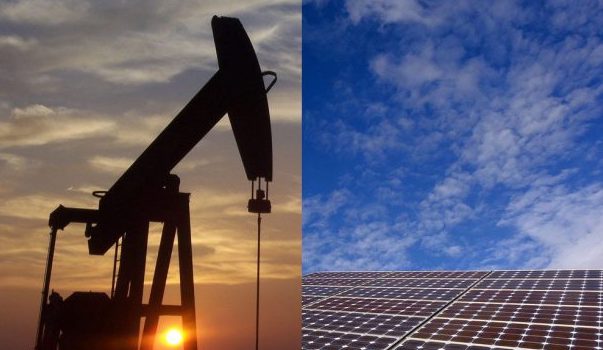Solar Power vs. Traditional Energy: Cost Comparison
June 8, 2024

In an age where environmental consciousness and sustainability have taken center stage, the energy landscape is undergoing a profound transformation. Traditional energy sources, such as coal and oil, are facing increased scrutiny due to their negative impact on the environment. Simultaneously, solar power is emerging as a viable alternative, promising clean and renewable energy. But is solar power really a cost-effective solution? In this article, we will delve into the realm of solar power and traditional energy sources to conduct a comprehensive cost comparison.
The Rise of Solar Power
The journey towards sustainable energy begins with understanding the potential of solar power. As the sun bathes our planet in endless energy, harnessing this abundant resource has become a priority for many. Clean energy experts at Clean Energy Experts have been at the forefront of this movement, advocating for solar power adoption.
Solar Power Systems: A Closer Look
To appreciate the cost-effectiveness of solar power, it’s crucial to understand the different solar power systems available. One notable player in this field is ADT Solar, which specializes in innovative solar solutions. They offer a range of solar panel options tailored to various needs.
Another key player, Strategic Solar Solutions, offers customized solar solutions for residential and commercial properties. Their expertise lies in designing systems that maximize energy efficiency while minimizing costs.
The Traditional Energy Landscape
Before we dive deeper into the cost comparison, let’s take a moment to examine the traditional energy landscape. For decades, fossil fuels have been the primary source of energy, driving industries and economies. However, this has come at a steep environmental cost.
The Environmental Toll
“The environmental toll of traditional energy sources is undeniable. We must seek sustainable alternatives.” – Clean Energy Professionals
Fossil fuels emit greenhouse gases, contributing to climate change and air pollution. The repercussions of these emissions are felt worldwide, making it imperative to explore cleaner energy options.
Solar Power Cost Analysis
To determine the cost-effectiveness of solar power, we need to consider various factors. Let’s break down the key aspects of solar power economics.
Installation Costs
One of the initial costs associated with solar power is the installation of solar panels. The amount you spend on installation can vary depending on factors like system size, location, and the solar provider you choose.
“Investing in solar power is an investment in a sustainable future.” – Powur
Companies like Powur offer comprehensive solar installation services, helping you navigate the process smoothly.
Solar Financing Options
Financing plays a pivotal role in the affordability of solar power. Many individuals and businesses wonder whether to lease or buy solar panels. This dilemma is expertly addressed in the article “Leasing vs. Buying Solar Panels: Which is Best?“.
Solar Panel Efficiency
The efficiency of solar panels determines how much energy they can generate. Newer technologies, like those offered by SunPower, boast higher efficiency rates, meaning you can generate more energy with fewer panels.
Traditional Energy Costs
Now, let’s turn our attention back to traditional energy sources and examine their cost dynamics.
Fuel Costs
Traditional energy relies on fossil fuels, the prices of which are subject to market fluctuations. Oil and gas prices can be volatile, leading to unpredictable energy bills for consumers.
Grid Dependency
Reliance on the centralized power grid can also impact costs. In the article “Solar Grid Dos and Don’ts: A Comprehensive Guide“, we explore the dos and don’ts of connecting your solar system to the grid.
Crunching the Numbers
To conduct a fair cost comparison, let’s consider a hypothetical scenario: a residential property aiming to meet its energy needs through either solar power or traditional energy sources.
Solar Power Scenario
- Installation: The initial cost of installing a solar panel system can range from $10,000 to $30,000, depending on size and location. However, government incentives and tax credits can significantly reduce this cost.
- Maintenance: Solar panels require minimal maintenance, primarily cleaning to ensure optimal efficiency. This cost is negligible compared to traditional energy.
- Energy Savings: Solar panels generate electricity from sunlight, reducing or even eliminating your reliance on the grid. This results in significant long-term savings.
Traditional Energy Scenario
- Monthly Bills: Traditional energy sources like coal and natural gas often lead to high monthly energy bills. These costs can add up over the years.
- Environmental Costs: It’s essential to consider the hidden costs of traditional energy, such as environmental damage and healthcare expenses due to pollution.
Making an Informed Choice
As we weigh the costs and benefits of solar power versus traditional energy, it’s evident that the former offers a more sustainable and cost-effective solution in the long run.
“Solar power isn’t just an investment in your property; it’s an investment in the planet.” – Momentum Solar
Conclusion
In the grand scheme of energy production and consumption, solar power shines as a promising alternative to traditional energy sources. While the initial installation costs may seem daunting, the long-term benefits in terms of energy savings and environmental impact make solar power a clear winner.
As you explore your options, consider consulting experts in the field, such as those at Smart Solar America, to make an informed decision about transitioning to clean, cost-effective solar energy.
When considering the switch to solar power, it’s crucial to address how it might impact your home insurance. To answer the question of whether solar panels are covered by home insurance, it’s essential to check with your insurer. Many policies do include solar panels under dwelling coverage, but it’s wise to review your policy and discuss potential adjustments to ensure your solar investment is adequately protected.
Additional Resources: